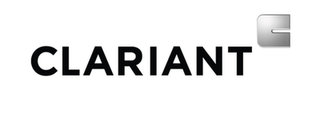There is no example of plastic packaging that is more ubiquitous than the plastic bottle. In 2017, Forbes magazine reported that humans bought a million plastic bottles per minute and that over half a trillion plastic bottles could be sold in 2020. Equally incredible is the fact that less than a quarter of those bottles are recycled. And yet, those same numbers also demonstrate that plastic bottles are filling a need in the marketplace.
Clariant, as a major supplier to the plastics packaging industry, is committed to helping to identify sustainable solutions and bring them to market. So when Clariant and three packaging technology partners -- PET Engineering, Aro Mida and Husky -- agreed to collaborate on a project related to sustainability, it is no surprise they set as their objective to invent “one of the most sustainable bottles in the world.”
Sustainability is going to be one of the most important issues in packaging in the coming years,” says Alessandro Dulli, Clariant Masterbatches Global Head of Packaging, “so we wanted to collaborate on an ambitious project… one that would really explore what is possible when you make sustainability your primary objective.
Luca Baldessin, Head of R&D at PET Engineering, a company specializing in the design, engineering and prototyping of PET packaging, comments that the partners chose to develop a water bottle because it is something everyone is familiar with and “because water is essential to life and sustainability is essential to the continued existence of life on earth.” The project bottle is labeled “ERIT Water.” Erit is the Latin word for “will be.”
In the ERIT Water project, Dulli says, “we wanted to really investigate what we could accomplish by taking advantage of all the technology available and to make a bottle that would not only demonstrate design for recycling but would offer a more complete ‘design for the environment’ solution.”
DESIGN FOR THE ENVIRONMENT
From the beginning, it was assumed that the ERIT bottle would be made entirely of recycled polyethylene terephthalate (PET) -- not just 25% or 50%, but actually 100% recycled material. No new polymers would be introduced into the world in order to make the container.
This was the first obstacle that needed to be overcome. Recycled PET, and especially post-consumer recycled material, is not perfectly clear. It tends to have a greyish or yellowish tinge that would not be acceptable in a commercial bottle. So Clariant’s ColorWorks design and technology center in Merate, Italy, was charged with identifying colors that could be used effectively in recycled PET.
Judith van Vliet, a ColorWorks designer, together with her colleagues Alessandro Pozzati and Roberto Romanin, decided they wanted to do something different. “We immediately thought of black,” says van Vliet. “Black is certainly not a color you would expect to see in a plastic water bottle, but it is becoming quite trendy as a color for packaging.” And it would allow Clariant to show off another new technology.
Most black plastics are made using carbon black, but unfortunately, those pigments absorb the near-infra-red (NIR) radiation that is used in the sorting process at commercial recycling centers to differentiate between different polymers. Instead of getting reused in high-value applications the way other properly recycled materials can be, the black plastic is usually mixed with other less desirable scrap and used in low-value products like plastic lumber. With new CESA® NIR black color concentrates, on the other hand, the black ERIT bottles become detectable in standard sorting systems so that the material can be recycled again.
Two additional colors – both reminiscent of water itself – were also developed. One is a light, frosty mint that is similar to green glass that has been worn by sea and sand. The other is a translucent petrol blue, which is a shade that falls between ocean blue and ocean green. All three colors are complemented by a metallic-copper-looking plastic cap.
MAKING RECYCLING EASIER
Color, however, is not the only thing that differentiates the ERIT bottle. The shape is just as unique. PET Engineering designed a bottle with two rounded sides and two flat sides. An array of ridges and hollows not only strengthen the bottle, but also make it easily squeezable so that it can be collapsed flat instead of top-down the way conventional bottles are handled today. The broad, flat surface that results is more readily visible to the infrared scanners used to sort different materials in a recycling stream.
The bottle also has a cap that is designed to remain attached to the bottle even after opening. These “teathered” caps are expected to be mandated by sustainability legislation in the European Community and in California in the USA within the next few years.
PROTECTING THE PLASTIC
PET is a material that can be difficult to work with, even in its virgin state. When it is recycled, the challenge increases because the long polymer chains that result in its clarity and strength can be damaged during grinding and reprocessing, and by any contaminants that get into the material.
That’s why the partners behind the ERIT collaboration selected a very high-quality recyclate to make the bottle in the first place. But to be truly sustainable, it must be possible to reclaim the PET and make new bottles over and over again. One of the problems in maintaining quality in recycled bottles is contamination from labels, ink and glue that remain in the PET flakes after the bottles are ground. This is where Mida SpA, part of the Aro Group, contributed its expertise to the project.
They selected from the market an innovative label for the ERIT bottle that enables clean separation of the label’s facestock from the PET container in a conventional recycling process. Since no residue is left behind, the pure PET flakes can be recycled more readily.
The fourth member of the ERIT collaboration was Husky Injection Molding Systems Ltd. The leading supplier of injection molding equipment and services to the PET bottle market, Husky was responsible for developing the tooling for the preform from which the ERIT bottle is blown and optimizing the weight and properties of the finished container. Husky also developed the tethered closure, which includes a hinge feature.
Discover more about our products and services at www.Clariant.com/masterbatches




